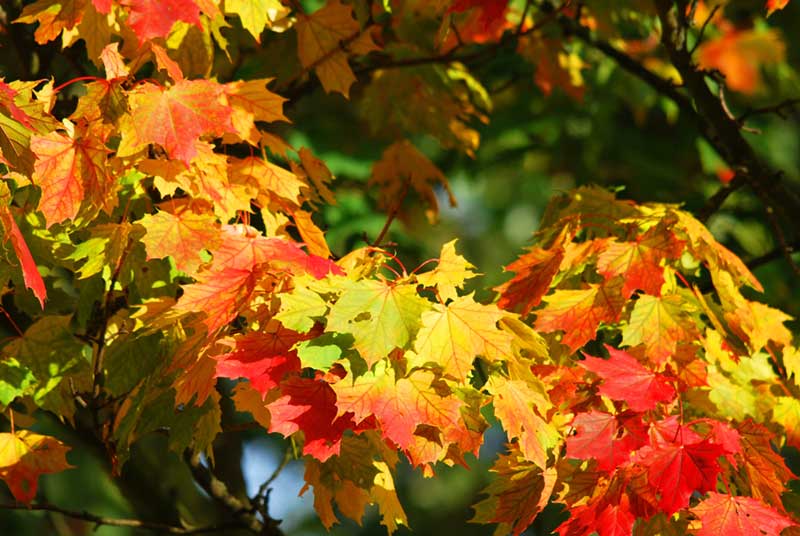
Maple may be the key to ageless skin says a new report.
Move over Moringa. There’s a new skincare superstar in town and she’s as Canadian as maple syrup. Or rather, she is maple syrup. Well, not exactly. But maple leaves.
According to a new report released this week from researchers at the University of Rhode Island, maple trees aren’t just beautiful to look at during the fall season. They may also have magical anti-aging properties. Scientists have found that an extract from the leaves may prevent wrinkles.
“We wanted to see whether leaf extracts from red maple trees could block the activity of elastase,” said Hang Ma, one of the researchers, according to a media release. Proteins such as elastin help maintain skin elasticity, and wrinkles form when the enzyme elastase breaks down elastin in the skin as part of the aging process.
The same scientists had previously studied the chemistry and health benefits of sap and syrup from sugar maple and red maple trees. This time they decided to look at the leaves.
The focused on phenolic compounds in the leaves known as glucitol-core-containing gallotannins (GCGs) and examined each compound’s ability to inhibit elastase activity in a test tube.
The scientists also conducted computational studies to examine how the GCGs interact with elastase to block its activity, and how the molecules’ structures affect that blocking ability. GCGs containing multiple galloyl groups (a type of phenolic group) were more effective than those with a single galloyl group. But these compounds can do more than interfere with elastase. In prior work, Seeram’s group showed that these same GCGs might be able to protect skin from inflammation and lighten dark spots, such as unwanted freckles or age spots.
Navindra P. Seeram, the project’s principal investigator, said “You could imagine that these extracts might tighten up human skin like a plant-based Botox, though they would be a topical application, not an injected toxin.”
The researchers have developed a proprietary patent-pending formulation containing GCGs from summer and fall maple leaves and maple sap, which they named MaplifaTM. They have licensed it to Indiana-based botanical extracts supplier Verdure Sciences with plans to create products for the cosmetics sector or even in dietary supplements.
The authors point out that their findings could benefit the economy of eastern North America. “Many botanical ingredients traditionally come from China, India and the Mediterranean, but the sugar maple and the red maple only grow in eastern North America,” Seeram says. Farmers in the region who harvest sap to make candy and syrup could begin looking at the leaves as an additional income source.
Native Americans once used the Sugar Maple for medicinal purposes. The Iroquois used various parts in compound medicines to purify the blood, or externally to treat skin, sore eyes and blindness. It was also used to treat shortness of breath and cough. It is no longer commonly used for these purposes.
If you like what you’re reading, subscribe to our newsletter to receive updates about the business of spa and wellness.
Spa Executive magazine is published by Book4Time, the world’s most innovative spa, salon, wellness, and activity management software. Learn more at Book4Time.com



